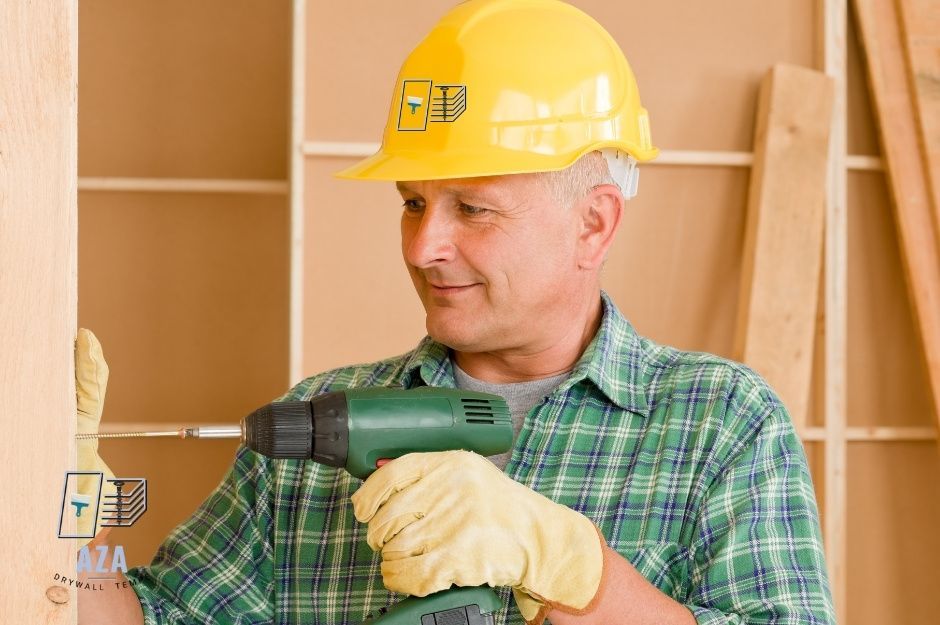San Tan Valley Drywall Repair Services
Trustworthy Sheetrock Repair Contractors in San Tan Valley, Arizona

San Tan Valley homeowners rely on professional drywall contractors at Aza Drywall Tempe to maintain and repair their walls and ceilings. These local experts handle everything from small patch jobs to complete installations, ensuring your home stays beautiful and structurally sound in Arizona's demanding desert climate.
Experienced contractors in San Tan Valley offer comprehensive services including crack repairs, water damage restoration, popcorn ceiling removal, and professional drywall finishing at competitive rates.
When you need drywall work in San Tan Valley, you'll find contractors who understand the unique challenges of the area's hot temperatures, which can reach up to 104.5°F and affect drywall stability. As part of the rapidly growing Pinal County community with a population of 99,894 as of 2020, San Tan Valley's hot desert climate (Köppen classification BWh) creates specific challenges for drywall installation and repair. These specialists use proper moisture control techniques and high-quality materials to prevent heat-related expansion and cracking issues common in desert environments.
Located strategically between Queen Creek to the north and Florence to the south, San Tan Valley's planned communities like Pecan Creek South, San Tan Heights, Archer Meadows, and Johnson Ranch have driven substantial demand for quality drywall services. Local drywall professionals bring decades of combined experience to every project, with many companies offering quick response times and dust-free service. You can expect detailed consultations, precise workmanship, and contractors who prioritize cleanliness while working in your home.

Aza Tempe Drywall (CP)

Comprehensive Drywall Repair Services in San Tan Valley
San Tan Valley drywall repair professionals offer specialized solutions for damaged walls and ceilings, utilizing advanced techniques and high-quality materials to restore your surfaces to pristine condition.
Patch Repair and Small Hole Fixes
Small holes from wall anchors, doorknob impacts, and picture hanging require precise patching techniques to ensure seamless repairs. Professional contractors use specialized compounds and matching texture methods to blend repairs invisibly with surrounding surfaces.
Your repair specialist will clean the damaged area, apply appropriate backing material for larger holes, and layer joint compound in stages for optimal results. This methodical approach prevents future cracking or visible patch spots.
The final texture matching process involves careful replication of your existing wall patterns, whether orange peel, knockdown, or smooth finish.
Addressing Cracking and Structural Issues
Wall cracks often signal underlying issues that need expert attention. Professional evaluation determines if cracks stem from foundation movement, settling, or drywall joint failure. In San Tan Valley's desert environment, the extreme temperature fluctuations—from daily minimums around 39°F in winter to maximums exceeding 104°F in summer—cause significant thermal expansion and contraction that can lead to drywall cracking.
Your contractor will stabilize the affected area using fiber tape or metal backing when needed. Large cracks receive reinforcement before compound application to prevent reoccurrence.
Strategic repair methods include V-cutting serious cracks and applying multiple layers of joint compound to distribute stress across a wider area.
Water Damage Restoration Solutions
Water-damaged drywall requires swift action to prevent mold growth and structural compromise. Professionals assess moisture levels and remove affected sections to protect your home's integrity. While San Tan Valley receives minimal annual precipitation (only 8.67 inches per year), the monsoon season from July to September can bring sudden intense storms, with August averaging 1.20 inches of rainfall that can cause unexpected water damage.
Your repair team will:
- Test surrounding areas for hidden moisture
- Remove and replace damaged sections
- Apply anti-microbial treatments when necessary
- Match existing textures perfectly
New moisture-resistant materials can be installed in bathrooms and other water-prone areas to prevent future issues.
Ceiling Damage and Popcorn Ceiling Removal
Ceiling repairs demand specialized techniques due to overhead working conditions and gravity's effects on repair materials. Contractors use supporting frameworks and quick-setting compounds for reliable results.
Popcorn ceiling removal involves careful scraping techniques and surface preparation. Your contractor will protect floors and walls during removal, then create a smooth finish or apply modern texturing. Many San Tan Valley homes built during the community's rapid development after 2000 feature popcorn ceilings that homeowners now want updated to match contemporary design trends.
Water stains on ceilings receive stain-blocking primers before final coating to ensure spots don't bleed through new paint.
Expert Drywall Installation Services
Professional drywall installation requires precise measurements, proper mounting techniques, and expert finishing to create seamless walls and ceilings. Experienced contractors utilize specialized tools and materials to ensure durability and a flawless appearance.
Residential and Commercial Sheetrock Installation
Your drywall installation needs vary based on the building type and intended use. Residential installations focus on standard 1/2-inch drywall for walls and 5/8-inch fire-rated drywall for ceilings and garages.
Commercial installations require specific fire ratings and soundproofing features. Your contractor will select appropriate materials like Type X fire-resistant drywall or sound-dampening panels. With San Tan Valley's upcoming incorporation as a municipality in 2026 following the passage of Proposition 495 in 2025, increased commercial development is expected, driving demand for specialized commercial drywall installations.
Common Installation Types:
- Interior walls and ceilings
- Fire-rated assemblies
- Sound-reduction barriers
- Moisture-resistant applications
Customized Drywall Solutions for New Construction
New construction projects demand careful planning and precise execution. Your contractor will coordinate with other trades to accommodate electrical, plumbing, and HVAC systems. San Tan Valley's elevation of 1,542 feet and position east of the San Tan Mountains creates unique considerations for HVAC integration and drywall installation to manage the area's extreme temperature variations.
Key Installation Steps:
- Wall framing inspection
- Utility rough-in verification
- Sheet sizing and cutting
- Professional mounting
- Joint taping and finishing
Special architectural features like rounded corners, soffits, or tray ceilings require advanced installation techniques and specialized materials.
Retrofitting and Remodeling Installations
Remodeling projects present unique challenges when integrating new drywall with existing structures. Your contractor must carefully remove old materials and prepare surfaces for seamless transitions. Many San Tan Valley homeowners in established neighborhoods like San Tan Heights are undertaking major renovations as property values have increased with the community's growth and proximity to the San Tan Mountains Regional Park.
Common Retrofit Solutions:
- Partial wall replacements
- Room additions
- Opening or closing doorways
- Ceiling modifications
Proper disposal of demolished materials and dust containment systems protect your property during installation work. Your contractor will match existing textures and finishes for a cohesive appearance.
Professional Drywall Finishing and Texturing
Professional drywall finishing transforms raw sheetrock into smooth, seamless walls ready for painting. Expert finishing requires precise taping, skillful compound application, and meticulous texture matching.
Seamless Taping and Joint Compound Application
Your drywall seams need proper taping to prevent future cracks and create invisible joints. Professional finishers apply paper or mesh tape with a base coat of joint compound to seal seams securely.
Multiple thin coats of compound create stronger bonds than single thick applications. Each layer must dry completely before the next application. In San Tan Valley's low-humidity desert environment (average dew point of 38.2°F annually), joint compound dries faster than in humid climates, requiring contractors to adjust their timing and application techniques accordingly.
Key compound application steps:
- First coat: 4-6 inches wide
- Second coat: 8-10 inches wide
- Final coat: 12-14 inches wide for complete feathering
Texture Matching and Surface Preparation
Matching existing textures requires specialized tools and techniques. Common Arizona textures include orange peel, knockdown, and skip trowel patterns.
Professionals spray or hand-apply textures to match surrounding walls perfectly. Surface preparation involves:
- Cleaning walls thoroughly
- Applying primer when needed
- Testing texture patterns on sample areas
- Adjusting technique and material consistency
Water content and air pressure settings affect texture consistency. Your contractor will calibrate these precisely for seamless matching. The extremely dry conditions in San Tan Valley, with minimal precipitation throughout most of the year, require contractors to use specialized moisture control techniques to prevent texture materials from drying too quickly during application.
Final Sanding and Paint-Ready Finishes
Light sanding between compound coats removes imperfections and creates ultra-smooth surfaces. Final sanding requires specialized tools and techniques to avoid scratches or gouges.
Professional finishers use different grit levels:
- Medium grit: Initial smoothing
- Fine grit: Detail work
- Ultra-fine grit: Final polish
Your walls receive a thorough inspection for any remaining flaws. Dust removal and surface cleaning ensure your walls are completely ready for primer and paint. Given San Tan Valley's desert location in the Sonoran Desert and its history as primarily undeveloped land prior to 2000, contractors must take extra care with dust containment to prevent fine desert particles from compromising the finish quality.
